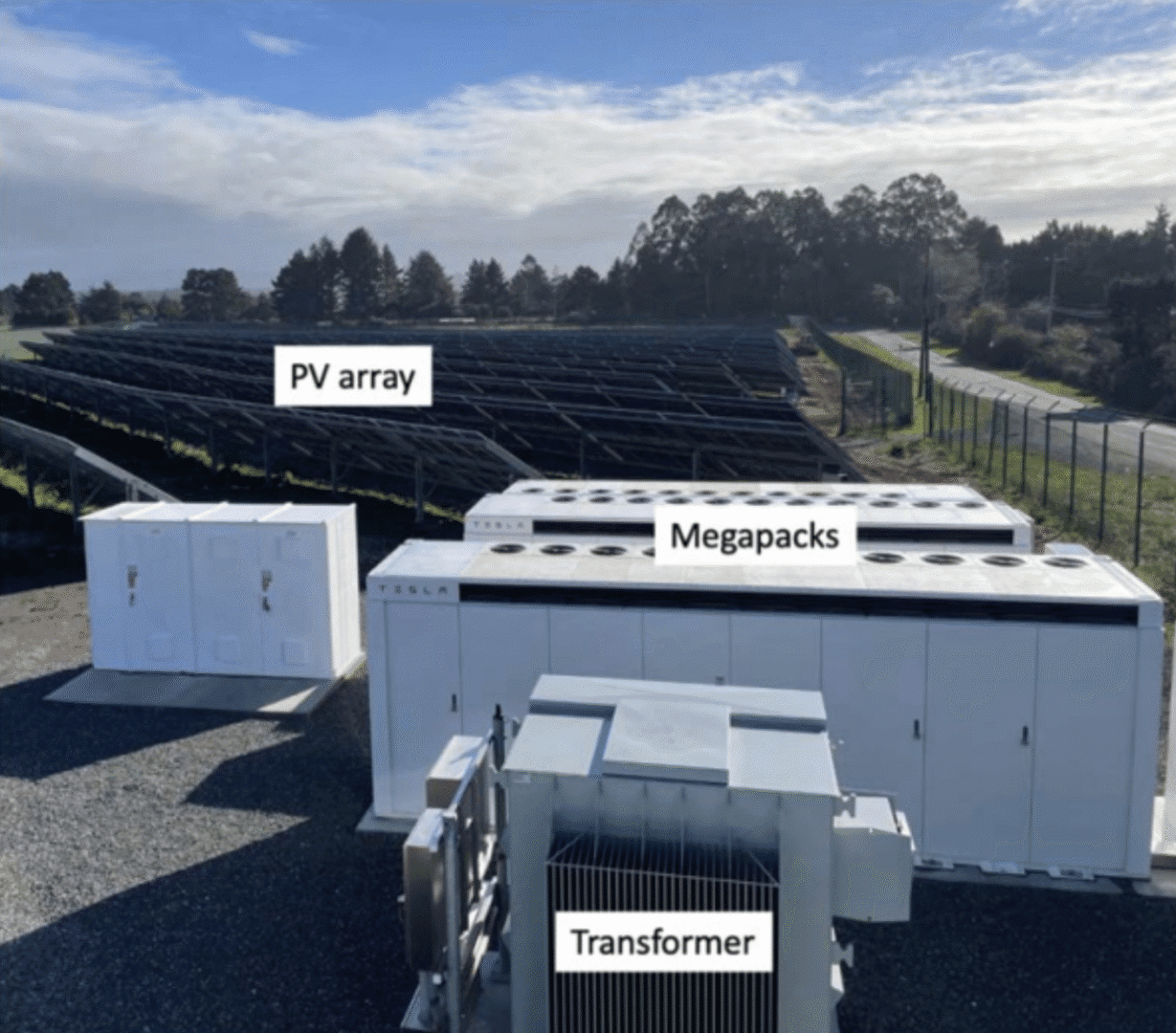
The Redwood Coast Airport Microgrid: A Beacon for the Community Microgrids of Tomorrow
This blog post highlights the Redwood Coast Airport Microgrid as a case study of a successful Community Microgrid project.
The Redwood Coast Airport Microgrid: A Beacon for the Community Microgrids of Tomorrow
In June 2022, local officials and community leaders in Humboldt County, CA, celebrated the launch of the Redwood Coast Airport Microgrid (RCAM), California’s first Community Microgrid — that is, the state’s first front-of-meter, multi-customer, 100% renewables-powered microgrid.
RCAM integrates 2.2 MW of solar, 2.2 MW / 8.8 MWh of battery energy storage, and advanced grid controls that enable the system to automatically island from the broader power grid in case of a power outage to provide a steady flow of power to the Redwood Coast Airport, the U.S. Coast Guard Air Station, and over a dozen other customers. During regular operation, the Community Microgrid supplies cost-effective, clean energy to the community as a whole via the Redwood Coast Energy Authority, the region’s Community Choice Aggregator. RCAM is a seminal endeavor that is catalyzing the development of Community Microgrids across the state and advancing a clean and resilient energy future.

The Redwood Coast Airport Microgrid in Humboldt County, CA, is California’s first Community Microgrid. Key components of the Community Microgrid are labeled in the image above (Schatz Energy Research Center).
Powering Through an Earthquake
RCAM has already experienced rigorous real-world testing. A 6.4 magnitude earthquake struck Humboldt County on December 20, 2022. While 79,000 homes and businesses lost power in the immediate aftermath, RCAM successfully islanded from the electric grid for 15 hours and continued providing a steady flow of power to the Redwood Coast Airport and the U.S. Coast Guard Air Station.
In addition to the 6.4 magnitude tremor, RCAM also smoothly islanded during winter storms in January and February of 2023 in which RCAM provided reliable power for 8 hours and 16 hours of grid outages respectively. As the first project of its kind, RCAM has proven that Community Microgrids are a dependable source of backup power during emergency grid outage situations.
Paving the Way for Future Community Microgrids
RCAM has achieved many firsts on the technology, policy, and financing fronts to pave the way for future Community Microgrids. During the development of RCAM, the Community Microgrid Enablement Tariff and Community Microgrid Enablement Program were established with PG&E to provide avenues for funding Community Microgrids across its service territory. RCAM’s novel Microgrid Operating Agreement has become the legal structure defining the roles and responsibilities of the parties involved in developing and operating a Community Microgrid in California. The technical, financial, and legal frameworks established for RCAM have made Community Microgrids a replicable model for clean, cost-efficient, and resilient local power across the state and beyond.
The success story of RCAM directly inspired the $200 million Microgrid Incentive Program (MIP) which is now funding the construction of new Community Microgrids across California. RCAM is a landmark project that is unlocking the potential of Community Microgrids to provide clean, cost-efficient, and resilient power.
Craig Lewis, Executive Director of the Clean Coalition, served on the Technical Advisory Committee to provide technical expertise and assistance in RCAM’s development and the early stages of operation. All parties involved have learned invaluable lessons from RCAM that are now being applied to Community Microgrid projects under development.
The Clean Coalition is now engaged in numerous MIP-funded Community Microgrid projects across California, in communities ranging from the rural Northern California coastal town of Tomales to a disadvantaged neighborhood in East Los Angeles. These two projects were both approved in the first round of MIP funding by their respective investor-owned utilities (IOUs). The Clean Coalition continues to collaborate with the IOUs on several more Community Microgrid projects in the second tranche of MIP funding. RCAM is to thank for creating the technological, financial, and regulatory frameworks for these new Community Microgrid projects.
RCAM has undoubtedly achieved leaps and bounds for the case for Community Microgrids. RCAM’s demonstrated success in both regular and emergency situations has shown that Community Microgrids are an essential piece of the puzzle in advancing a clean and resilient modern grid.
Going forward, Community Microgrids must scale up and become more widespread to achieve their full potential in delivering an unparalleled trifecta of economic, environmental, and resilience benefits to communities everywhere. The relatively small-scale MIP-funded projects currently underway aim to prove that Community Microgrids can operate effectively across varied locations and circumstances. If successful in demonstrating their broad applicability, these projects could usher in a future where Community Microgrids enable entire towns and cities to enjoy uninterrupted, clean, and resilient power — redefining the modern grid.

